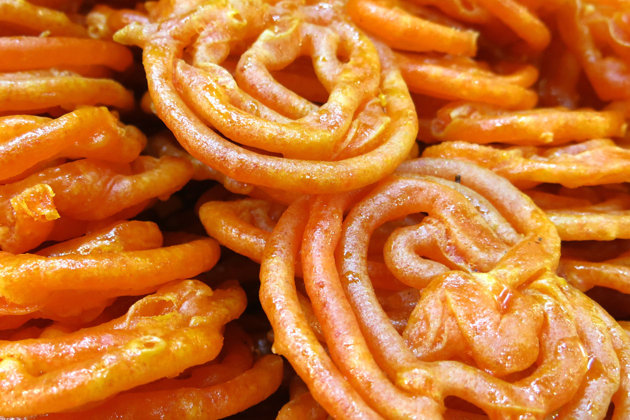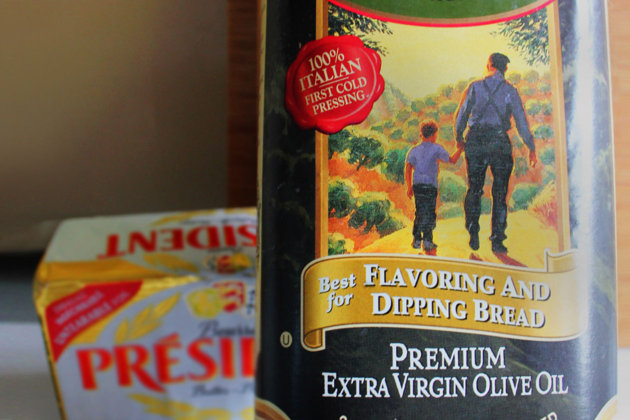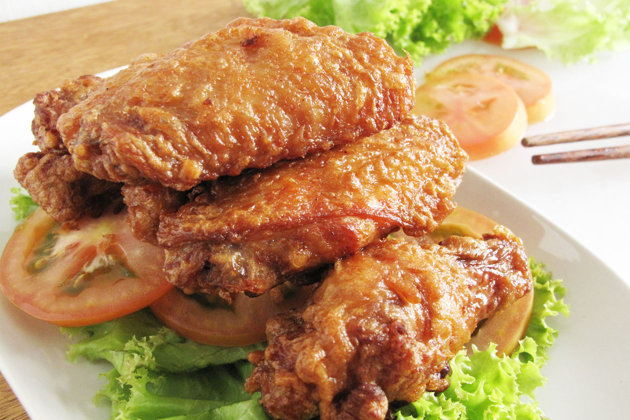
The Right Oil to Boil
By Jade Hu - Tuesday, Mar 04, 2014
If you are a chef worthy of a spot under this sun, you would know that oil is an indispensable part of the cooking process. But not all oils are created equal, and it is important to know which type of oil to use to get the most out of your ingredients and the goodness of the oils. So what do you use for ha cheong kai, stir fried beef kailan and even three cup chicken?
Different kinds of oils have different uses. The performance of each type of oil peaks at certain temperatures. Some are best for stir-frying, others for drizzling over salads or as a condiment. Knowing the smoke point of oil – the temperature at which the oil starts to give off smoke, is critical in understanding suitability. Largely derived from the purity and the age of the oil when it’s measured, the smoke point can degenerate (i.e. go lower) if the oil is used repeatedly, such as reusing oil for deep-frying.
One quick rule of thumb is to look at the colour – the lighter the colour, the higher the smoke point. Oils with high smoke point are ideal for frying, because this means the oil can reach very high temperatures before emitting smoke. When smoking happens, the oil will make your food taste bad and also give off unpleasant odours.
Here are eight types of cooking oils and fats commonly used in local foods and in Singaporean households and what they are best for.
Canola oil is good for salads and medium-heat stir-frying because not only does it have a mild flavour, its low saturated fat content basically means a healthy diet. Being one of the least expensive and most flexible types of cooking oils, it is a top choice for home cooks in a Singaporean kitchen.

Butter provides a lot of flavour in baking, but it’s not good for frying as it burns at a much lower temperature than oils such as canola and peanut oil. It can be used for sautéing meat and vegetables. Toss in a small dab when making fried rice for extra fragrance.
Olive oil is a highly versatile oil, and is considered one of the most healthy oils with its high monounsaturated fat content, antioxidants and polyphenols. There are two main types of olive oil, refined and unrefined. When oil is refined, the smoke point is increased, meaning it becomes more suitable for higher heat cooking such as frying. Refined olive oil can be used for stir-frying and sautéing . If it says “pure olive oil” on the label, it is refined olive oil. Virgin olive oil and extra-virgin olive oil are unrefined oils, which are usually cold-pressed and extracted by machine using pressure and no heat. That means the oil is left with a high nutrient content and a natural earthy-nutty flavour. The more expensive extra-virgin olive oil is best used as salad dressing or a dip, and its value is preserved if it is not subjected to heat.

Ghee is a clarified butter obtained by first melting butter, then boiling away the water and harvesting the clear yellow butter fat residue from the milk solids. Commonly used in Indian cuisine, ghee is used in preparing rice dishes such as biryani, dabbed and brushed onto breads like naan, thosai and prata, and used to make Indian sweets like laddu. It has a strong buttery and nutty taste and thus great for sautéing vegetables, and thickening gravy and soups. However, if you have a dairy allergy or are vegan/vegetarian, you might want to check if ghee is being used in preparing your food.

Peanut oil is ideal for Asian-style cooking, grilling and deep-frying because it has a high smoke point. Its subtle flavour and aroma means it is very versatile and goes well with most types of food. It is advisable to use this in moderation, as this oil is high in Omega-6 fats, which can be easily obtainable in a regular diet and not good for health if too much is consumed (as opposed to the less common Omega-3 fats which need to be taken as a supplement). Also, people with peanut allergies should watch out for this oil.

Lard is pig fat, used as cooking fats or shortenings. Nowadays cooks and bakers prefer to use vegetable shortening instead because lard is harder to find and has a distinct taste that not everyone may take well to. Pure lard, with its high fatty saturated acid content, is ideal for high temperature cooking because of its relatively higher smoke point means less smoke and does not overwhelm its unique taste. It flavours dishes such as char kway teow or hokkien mee, which some people like and specifically look out for. Granted lard is jam-packed with trans fats and saturated fats, so use it and eat foods containing it, sparingly… if at all.
Sesame oil is an edible vegetable oil that comes in two forms, light and dark. Light sesame oil is good for deep-frying but the dark version is better off used in stir-frying noodles and making Asian stir-fry at medium heat. Dark sesame oil, with its intense flavour and aroma, is often used to make three cup chicken. It is not recommended to use sesame oil as a cooking oil alone as it burns easily. With its intense nutty flavour, this aromatic oil is also used as a marinate, or as a seasoning in a cooked dish. It also does not turn rancid easily with its naturally high antioxidant content.
Vegetable oil is a common cooking oil made from blending together a mixture of nuts, fruits and seeds. Examples include sunflower, corn, soybean and safflower oil. Its high smoke point and lack of a distinctive aroma or flavour means it can be used for most cooking styles and dishes, such as frying fish. However, health-conscious folks might want to avoid because these oils are often laden with trans-fat and polyunsaturated fatty acids, which are not good for health at all.


